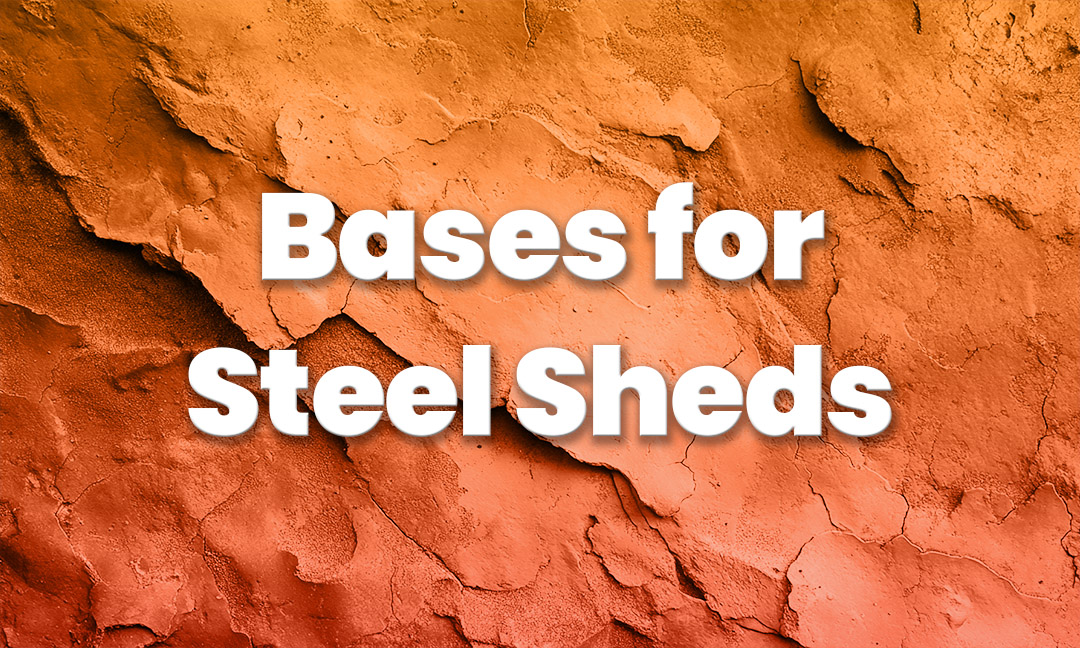Why can’t I build my steel shed on grass?
There are 2 main reasons.
1. The Structure
A natural base, i.e. grass or soil, will move over time and the shed will sink into it. This is generally a slow process, but if the shed sinks faster in one part than another, this will put a lot of stress on sections of the frame. This will lead to the panels warping or cracking. This may take a year or two, but it’s totally avoidable; A solid base will prevent this from being an issue.
2. Damp rising & Condensation
A steel shed built on grass will suffer extreme condensation. We’ve seen instances where it was so bad, that it looks like it had been raining overnight inside shed. Damp will rise through the soil and the air inside the shed will become moisture-heavy. If the shed is subject to conditions were condensation can occur, it will have more than enough moisture to make the shed drip, or ‘sweat’ heavily with moisture.
Complete, solid & level
Your base should be complete. This means that the full surface area of the base is made of an appropriate material. Your base should not just just for around the rim of the shed.
Your base should be solid. Concrete, tarmac, hardcore store & paving slabs are all suitable. They are solid.
The base should be level. Uneven bases pose a problem to the structure of the shed, and they can make shed assembly very difficult, if not impossible.
Here are some photos of bases that are suitable:
The Concrete base:
This is the ideal solution for your shed. It can however by costly and the concrete can take some time to dry. Remember to allow time for the concrete to dry fully before you build your steel shed onto it.
The Tarmac base:
Tarmac is another suitable base. Once it’s dry, complete, solid and level, it can make a perfect pad for your new steel shed.
By now you should have the idea. However, if you need examples of unsuitable bases, here are some examples with explanations of why they are unsuitable.
Sunk Stones:
While beautiful (and like something you’d see in Hobbiton), this is not suitable for a steel shed to be laid onto.
Issues:
- It’s not complete. The stones are not connected, leaving gaps of various different heights
- It’s not level. There is a very apparant slope across this base. On top of that, each stone has a rough top, which would not facilitate the frame of the shed well.
Pallets:
This is a surprisingly common approach to a base. It is, however, entirely unsueable.
Issues:
- It’s not complete. The gaps between the planks on the pallet would not facilitate the base frame of a steel shed. You can se this at the front, where the gap in the pallets means there’s no frame present where the door should be.
- It’s not solid. While pallets can withstand a lot of flat, evenly distrubed weight, this is a weak base for a shed. One mis-step inside a shed with this as a base and your foot could poke through the floor.
- It’s not level. It’s reasonably level, but (and I’m aware the picture quality isn’t great) you can just about see that the base frame along the back doesn’t meet the frame along the right.
The Damp-proof Membrane
Your shed should not be constructed until you have a damp proof membrane incorporated into your base. A damp-proof membrane is essentially a sheet of thick plastic that prevents moisture rising up into your shed. It would be standard practice for any major construction to have one included under the base/foundations these days. If your base is being prepared by someone else, we recommend that you ensure that a damp-proof membrane is included under the base.
Under the base, not under the shed.
Just to be clear, the membrane should go under the base (e.g. under the concrete, under the tarmac, etc.) and not under the shed to be effective.
Any questions?
If we’ve not answered your questions, get in touch and we’ll make sure you’re given a full shed-ucation.






